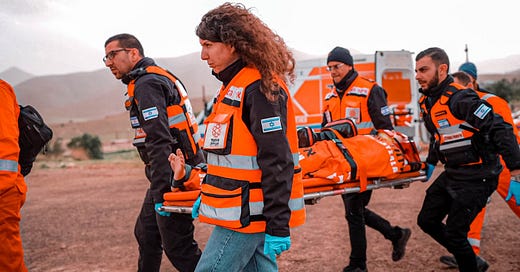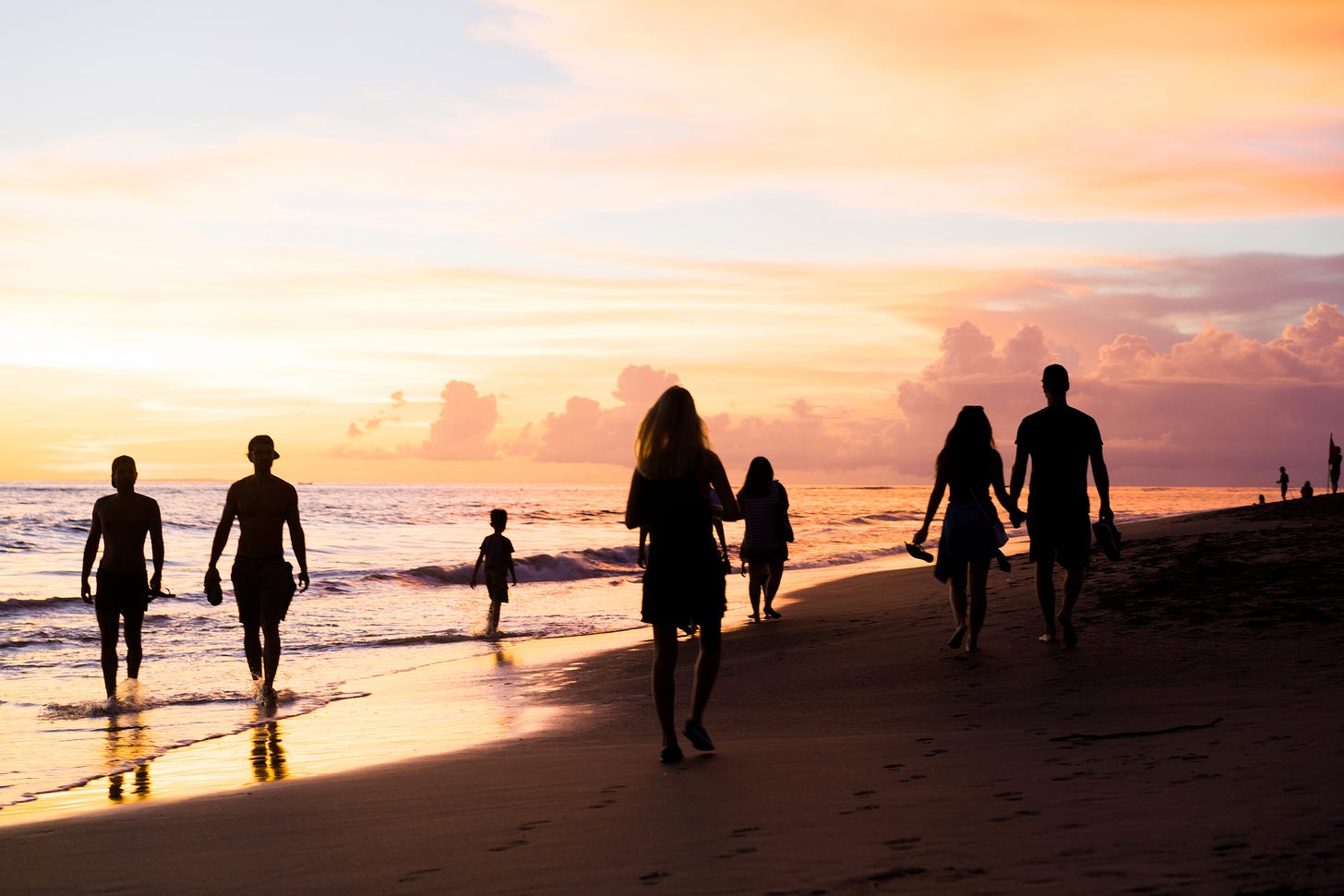Why I Decided to Become an EMT in Israel
How a near-death experience inspired me to join the medical field
Back in college, I got the most terrifying phone call of my life, “Your papa is in the hospital.”
My dad is a sturdy man who I always assumed had nine lives, but still – not the news you want to get.
I was told that my father had nearly drowned off the coast of Florida in the Atlantic Ocean. A passing angel of a man saved his life and resuscitated him using high-quality CPR (cardiopulmonary resuscitation).
This incident planted a desire in me that would take over a decade to sow: getting into the medical field. I wanted to help provide that feeling of relief I felt when I learned that my dad’s life had been saved by a well-prepared stranger.
I first considered pursuing an EMT course when I moved to New York for graduate school, but the barrier to entry was pretty high for my student income. An EMT course costs around $2,000 – which I didn’t have lying around – and finding a place to work seemed hard due to high demand and competition. So, I put that dream on hold for a little while longer.
It wasn’t until 5 years later, when I moved to Israel, that this long-time dream became more attainable. In Israel, an EMT course is affordable and would be refunded due to my new immigrant status. National programs are set up and ready to accept new volunteers.
I chose to go with Hatzalah, who offered an NREMT (National Registry of Emergency Medical Technicians) course in English (as you can assume, Hebrew takes a while to learn…). It was crucial for me to be able to absorb all the information to the fullest extent. I know that providing proper care in an emergency situation is not easy, nor does it come naturally.
The program I entered had much fewer barriers than my previous location: my classmates ranged from 18 to 65 and no one asked me for any other information – no driver’s license or GED requirement.
Now, seven months later, I am a Hatzalah trainee volunteer – I am not getting paid for this role. However incredible being an EMT feels, it feels even better to be donating time and skill to people who need it.
Here was the process:
Course structure and requirements
The course took three months total. We met every week for six hours, accompanied with 15 hours of reading. We took regular exams leading up to a final written exam and had to complete three mock scenarios: a medical emergency, a trauma emergency, and straight CPR with ventilation. The book we read was Jones & Bartlett NREMT book, which I highly recommend for anyone interested in becoming an EMT.
Taking this class was an important foundation. Perfection was not the goal – development was. We focus on compassion, intention, intuition, and care, and through that we achieve competence in emergency medical services (EMS).
Although the whole EMS institution encourages you to be physically healthy and exercise regularly, there’s no requirement to do so (although there may be restrictions for people with certain disabilities). Hatzalah also requires having a car or a bike for faster transportation to calls (we call them “happenings” – mikrim / מקרים).
How was the course?
The course was really intense, and the people I met through it were even more so, in the best way possible. I met several people who were inspired by COVID-19 and by October 7th to start volunteering. One of my (now) friends is a tour guide and wanted to be able to help her tourists in a pinch. Others were interested not only in helping people but in adrenaline. I met 65-year-olds fulfilling a life goal and 17-year-olds who just wanted to make friends.
Most people I met are ex-pats (a.k.a. olim / עולים). We may not totally fit into the Israeli culture or understand the Israeli mentality, but we all pushed hard to become certified EMTs.
Now, it’s up to us to use our skills.
What I learned and what I’m doing with it now
The course taught me how to do high-quality CPR, basic field diagnostics for cardiac and pulmonary emergencies, basic trauma responses (think splinting, bandaging, etc.), and what to do if there’s a terrorist attack because this is the reality we are living in.
I’ve only been a trainee volunteer (mishtalem / משתלם) for a few weeks, but it’s already been immensely rewarding.
As a trainee, I am not allowed to go on calls without supervision. However, the Hatzalah model is distinct. You don’t go to calls along with a supervisor; you go to calls on your own and hope a supervisor shows up! It might be someone more experienced from Hatzalah or from the main competitor, MDA. This system is admittedly intense. It’s extremely difficult to force yourself to show up at calls without guidance. Thankfully, Israeli EMTs are forgiving – they also all learned this way.
When I go to calls, I usually have a relatively easy time finding my place in the room, even if that place is just watching the events unfold. Sometimes, I become the translator, like I did a few weeks ago for a French man who was struggling to understand the paramedics’ Hebrew. Other times, I actually get to take blood pressure measurements or set up the IV.
The calls that teach me the most are also the most harrowing for the patient. I was on a call recently for an elderly woman who had aspirated some food. Her oxygen saturation was low when I got there and she was in and out of consciousness. A few MDA paramedics were working on her, while I watched and assisted.
I remember one of the paramedics asking me to aspirate the patient's regurgitated matter and my first thought was “amazing, such a good learning experience”. You might think that's an odd way to see it, but in order for me to be an effective EMT, I have to forget that I am working on a human, and simply think of the body as a machine that is doing what it needs to do.
The second I actively thought about the pain and discomfort the patient was going through, I was almost sick myself, which would have been a bit of a disaster.
At the end of the day, we all have coping mechanisms that help us help people, which is ultimately the purpose of our training.
How to get involved
First and foremost, stay healthy!
Many calls that I go on are to retirement homes or apartments where the elderly live. I see firsthand the ravage of time and self-neglect. This cements my goal of self-care and healthy living so much more. If you’re already exercising and doing your best to eat healthy, keep it up. If you’re not, it’s never too early or late to start (OK, toddlers are exempt).
Something else you can do is learn simple CPR steps. This can be lifesaving, and courses are easy to find and take 2 hours at most.
A crucial misconception is that the goal of CPR is to restore spontaneous breathing and cardiac activity. Say it with me now: this is wrong!
The goal of CPR is to maintain a flow of oxygenated blood to the brain and other organs. It’s meant to keep blood flow going. CPR can last an hour if necessary. It is not the quick and “easy” process you see in movies.
CPR needs to stop eventually; either when the patient resumes spontaneous breathing or if a medical authority says to stop. Don’t stop on your own accord, no matter what Taylor Swift recommends.1
See So Long London by Taylor Swift.






